|
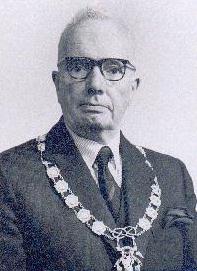
|
Dr John
Alexander
(Alistair)
Galletly
1899-1993 |
One of the most
respected and interesting people in Bourne during the last 100 years was Dr John Alexander Galletly who was always known by his preferred name of Alistair. He was a highly qualified and well-liked family doctor and although considered to be a little eccentric in his declining years, he had a depth of knowledge about the people of this town that has been unequalled since.
He may have inherited this trait from his father, also called John, because the few memories we have of him indicate a man of similar temperament and often inclined to follow an unconventional path.
Dr John Galletly, senior, was born and educated in Scotland but moved south in the late 19th century to practice in England, having done locum work in Cumberland where he met his wife Caroline. He went originally to Rippingale in 1890 and lived at
Down Hall, also known as the Doctor's House,
at a time when ambulances were horse-drawn and emergencies relied on a
farmer's cart to transport an injured patient. The doctor's area was also
limited to those places that could be reached by a pony and trap or even a
bicycle. Seven years later, he took over Dr Robert Brown's practice in North Road, a property that once stood near the present bus station. Their son John was born there on 18th
February 1899, the eldest of four children, and when he was seven, the family moved to
The Gables, a newly built house at No 40 North Road where the practice remained for the next 70 years.
|
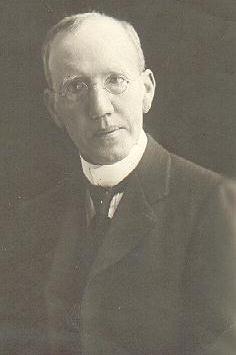 |
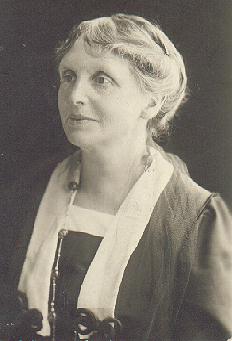 |
|
Dr Galletly senior and his wife Caroline.
She was elected chairman of Bourne Urban District Council for 1930-31,
the first woman ever to serve in that office, and a street in the
town has been named in her honour. The photograph below shows Dr
Galletly and his wife seated in their pony and trap with their maid
and footman, a picture taken at Rippingale about 1895, shortly
before leaving for Bourne. |
|
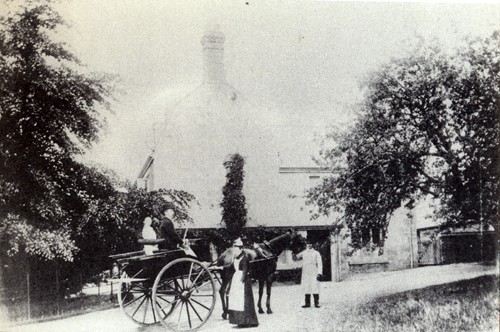 |
John was educated at Sleaford Grammar School, travelling there and back from Bourne each day by train, and in 1911 he and his brother Noel and their younger sister Ruth were sent to school at the Lycee de Cherbourg after their father, a
frugal Scot, had discovered that he could educate all three in France for the price of one in England, and during his time there, John became a fluent French speaker.
From there, he went to Epsom College in Surrey, a school for the sons of doctors, and in the summer of 1917, having been attested for military service on his 18th birthday, he joined the army and was commissioned the following April and sent to the front to join the 7th Battalion of the Lincolnshire Regiment. While in action on September 18th, he was wounded in the right knee and sent back to England and was subsequently discharged in the spring of 1919.
Having decided to finish his studies, John went to Queen's College, Cambridge, to read medicine for three years and he then moved to the Middlesex Hospital in London for clinical training. He qualified MRCS
[Member of the Royal College of Surgeons] and LRCP [Licentiate of the Royal
College of Physicians] in 1925 and obtained his Cambridge degree
B Chir [Bachelor of Surgery] in 1926 together with a Diploma in Public Health and a Master
of Arts degree. After qualifying, he became a house physician at the Evelina Children's Hospital in Southwark Bridge Road, London, followed by similar appointments at the Middlesex Hospital where he later obtained his obstetric housemanship under the great gynaecologists of the day, Doctors Berkeley and Bonney.
During the bitter winter of 1927, he returned to Bourne to help his father in general practice and stayed, swapping the routine of hospital life for a daily round of births and deaths, fractures and bruises, extracting teeth and tonsils, dealing with diseases and infections and even mixing his own medicines. From then on, his professional life was spent in the town and when his father died in 1937, he also succeeded him as Medical Officer of Health for South Kesteven.
|
 |
|
A poignant presentation to Dr Galletly on
Thursday 20th August 1992 when officials of the Bourne and
district branch of the Royal British Legion arrived at his home in
North Road to present him with an inscribed medallion to mark his
long association with their organisation but found him ill in bed
yet he agreed to see them. He was then 93 years old but received
his guests cheerfully, apologising that he was in his pyjamas
rather than his usual smart suit. Also in the picture are George
Barber, chairman, (left), with former chairman Edwin Horn and the
vice-chairman, Councillor Don Fisher (right). |
Dr Galletly's interests were wide and varied, particularly in the field of local affairs, becoming a member of Bourne Urban District Council and its chairman in 1961-62, an independent member of Kesteven County Council, being made an honorary alderman in 1974. He was also a trustee of Bourne United Charities, a governor of Bourne Grammar School, vice-president of Bourne British Legion and was awarded the British Legion medal in 1991 for 70 years of loyal service. He was also active with the British Red Cross and St John Ambulance Brigade, becoming one of their senior instructors, and was appointed an Officer Brother of the Venerable Order of the Hospital of St John of Jerusalem in 1969. He was also an active member of the Council for the Preservation of Rural England and for many years chairman of their local committee and closely involved with the Lincolnshire Old Churches Trust, the Lincolnshire Trust for Nature Conservation and the Wildfowl and Wetlands Trust.
His sister, Mrs Ruth Finn, had also qualified as a doctor and during the Second World War from 1939-45 she ran a second practice in the town while Dr George Holloway of Brook Lodge was serving with the forces. Bourne's population at this time was around 5,000 and they were the only doctors in town. When Dr Holloway returned after the war and resumed his practice, Dr Finn became the Medical Officer of Health for the district.
Dr Galletly combined his professional and public work with a love of gardening and a keen knowledge of local history, becoming an inveterate letter writer to newspapers and magazines on a wide variety of topics but most were usually reminders of times past. During his career, he saw innumerable changes in medicine, new drugs, different methods of treatment, remarkable refinements in surgery and the implementation of the National Health Service in 1948 which he welcomed. He was socially gregarious and numbered the comedian
and actor Sir George Robey (1869-1954), dubbed "The Prime Minister of
Mirth", among his friends after he had been invited to open a garden fete in the grounds of
his North Road home in 1936 to help raise funds for the Butterfield
Hospital. Robey, then plain Mister, was appearing at the Embassy Theatre
in Peterborough and came to Bourne with the consent of the management and
after an amusing and entertaining speech, he signed photographs for a
small fee which went towards the appeal and then toured the hospital.
Those in the photograph below are (from left to right) Mr A E K
Wherry OBE, Mrs Robey (the former Blanche Littler, sister of the London
theatrical impresario Prince Littler), Mr Robey, Dr Galletly and an
unknown lady whose husband should no doubt have been sitting in the vacant
chair.
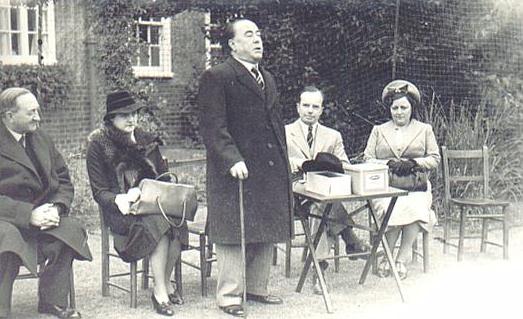
Even during his final years as a general practitioner, the room at his home that he used as a surgery remained in appearance as it was when he had treated patients there in years past. A Bunsen burner was attached to the wall and a sink with hot and cold taps fitted into his workbench. On the shelves were bottles of acids and other chemicals, all neatly labelled in Latin and it was these ingredients that he used in mixing his own medicines, often using a pestle and mortar. He remembered those times when interviewed in March 1985:
People used to bring their own bottles that I would fill with my medicines. I used to have to pound and pound with the pestle to get the right liquidity. It was easier for patients to swallow a liquid than take a pill. I also used a lot of olive oil to make ointments because it was such a perfect emollient lotion. A lot of my medicines came from herbs. Foxgloves for instance, were used as a heart medicine. I used
tannic acid for nose bleeds, eucalyptus for curing coughs, colds and congestion, zinc for making up ointments and magnesium sulphate for bowel problems.
Once the National Health Service arrived, I could give out prescriptions to everyone and they could collect their medicines from the chemist because there was no charge any more. This was much easier than pounding away with the pestle and writing out bills for patients afterwards. I used to charge about 3s. 6d (17½p in decimal currency) for a bottle of medicine and 5s. (25p) for a medical check-up but it was always double for night jobs although that was usually to deliver a baby.
I must have delivered between 50 and 60 babies a year and often had to use forceps when there was a problem. If I got a call to deliver a baby while patients were outside in the waiting room, I used to tell them all to go home and come back next day. I would charge £2 for a rush job like that but everyone got treated in the end. I really loved my work. The sight of blood never bothered me but my stomach did turn at the sight of someone vomiting.
Dr Galletly retired in 1969 when he was 70, having been practising in Bourne
for 41 years. A public collection held to mark the occasion totalled £257
15s., some of which was used to buy an easy chair and a transistor radio and
the balance of £201 was given to him by cheque. Making the presentation, Mr R
G Chapman said that the doctor had spent his professional life as medical
advisor and confidante to the people of Bourne. He added: "Very few
achieve the respect and affection which Dr Galletly commands over a very wide
area. He is known to everyone and his medical skill has benefited four
generations. Truly, the expression 'family doctor' can be used without fear of
contradiction in relation to him. We therefore acknowledge with gratitude his
service to the community as doctor extraordinary."
In
his reply, Dr Galletly said that it had been a privilege and a pleasure to
serve the people of Bourne. "I have a feeling of continuous
friendship with everyone, making life so very much worthwhile."
After his retirement, the practice was moved to the new clinic in St
Gilbert's Road but ironically, the house was refurbished for use as the
Galletly Group Practice after his death and some of the old medical
instruments that he and his father had used were preserved as a small
museum. His interests in medicine, people and the community continued
until the end of his life and he maintained a wide circle of loyal friends
until his death on 4th April 1993 at the age of 94.
|
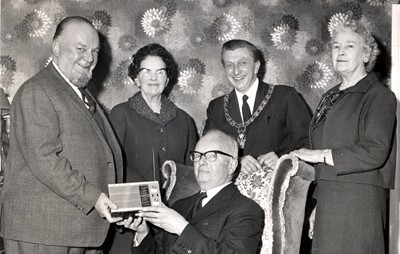 |
RETIREMENT GIFT
The presentation to mark Dr Galletly's retirement
was made by Mr R G Chapman on behalf of the town and district. Also
there were (left to right) Dr Ruth Finn, Councillor Ted Kelby, chairman
of BUDC, and Mrs D M Holliday. |
|
The funeral was held at the Abbey Church,
conducted by the vicar, Canon John Warwick, and he was buried in the family
grave at the town cemetery with his mother, Mrs Caroline Galletly (1865-1934),
brother William Noel (1901-19), sister Mary Constance (1900-01), sister Ruth
Caroline Finn (1903-92), also a doctor, and her husband Richard Austen Finn
(1900-69). The memorial headstone is marked with the Latin inscription
Hactenus Invictus meaning Till now unbeaten, a
fitting tribute to a remarkable man whom Bourne will not forget.
|
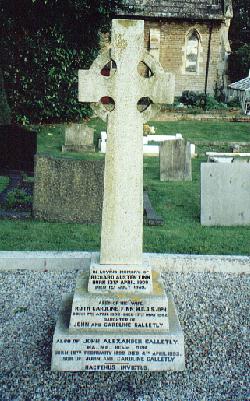 |
In his retirement years, Dr Galletly
admitted that he missed what he called, the old days, and the role of the
doctor in today's modern practices. Shortly before his death, he wrote:
"The burden of the general practitioner has been lightened very much but
is he still as much a member of the community as he used to be? Does he
still have to wonder what is meant by 'the vapours' or dissuade a patient
from the use of bread as a poultice or even goose grease? And will he find
a nice cup of tea and a piece of cake for him after attending a
confinement?"
|
REMEMBERING THE DOCTOR
A memorial seat inscribed to the memory of Dr
Galletly can be found in the War Memorial Gardens overlooking the river
in South Street. |
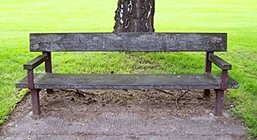 |
|
MEMORIES OF TIMES PAST
In the winter of 1947, the countryside was wrapped
in snow. There were only two doctors in the area then, the late Dr
George Holloway and myself. I had to visit a patient at
Witham-on-the-Hill but then had to make my way to Thurlby and thought
that to avoid Toft hill, it would be easier to go by Wilsthorpe but was
told wrongly and my car finally gave up at Manthorpe level crossing. I
walked to the water board house and telephoned from there for a taxi to
meet me at the late Mr Fred Wade’s house in Thurlby. I walked along the
railway line as far as Thurlby station and then down the village high
street. When I got to Mr Wade’s house, Burchnell’s taxi was there. Mrs
Wade opened the door. She did not say “Would you like a drink?”, she had
one ready for me! A kindness I never forgot. The present snow reminds me
of the practice of those days.
- letter from Dr Galletly to the
Stamford Mercury in 1985 |
|
 |
|
No 40 North Road,
Bourne, home of Dr Galletly until he died in 1993 and now used by
the Galletly Group Practice (above) and the two Bourne street signs that remember his
mother and his sister (below). |
|
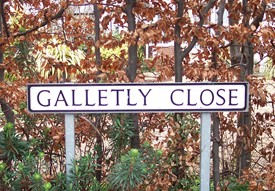 |
 |
|
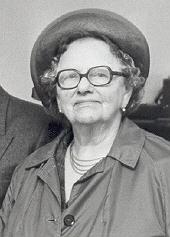 |
DR RUTH FINN (1903-92)
Dr Galletly's sister was Dr Ruth Caroline Finn,
also a general practitioner in Bourne. She was educated privately in
France and at Sherborne School, Dorset, before studying medicine at the
Royal Free Hospital in London, qualifying MRCS [Member of the Royal
College of Surgeons] and LRCP [Licentiate of the Royal College of
Physicians] in 1928, MB [Bachelor of Medicine] and BS [Bachelor of
Surgery] in 1929, and DPH [Diploma of Public Health] in 1930, before
being appointed house physician. |
|
She later moved to general practice in Bourne,
also taking an active role in many local organisations, notably the
Bourne branch of the Conservative Association of which she was
vice-president. Her services were particularly useful in Bourne during
the Second World War of 1939-45 when the number of doctors in the town
was reduced. Her main interest was youth work, serving as commandant of
the Girls' Training Corp from the time it was formed in 1943 until April
1945. Her work for the community was recognised by Bourne Town Council
in the spring of 2004 when a street on the new housing estate being
built on the site of the former Bourne Hospital in South Road was named
Finn Close. |
|
MRS CAROLINE GALLETLY (1865-1934)
Caroline Galletly was a native of Penrith, Cumberland, and married Dr
Galletly soon after he took over the practice at Rippingale where she
became active in church and village life. When the practice moved to
Bourne, they set up house at a rented property in North Street before
moving into The Gables at No 40 North Road which became their home and
medical practice.
She was a talented musician, pianist, violinist and vocalist
specialising in songs from the north of England, and soon made her mark
with the Bourne Amateur Operatic Society which at that time was
producing some of the operettas of Gilbert and Sullivan, taking part in
a production of The Mikado in 1897 and later joining the orchestra as a
violinist.
During the Great War of 1914-18 she became an organiser at the Bourne
Military Hospital established for the care of wounded soldiers at the
Vestry Hall in North Street and for a number of years she also ran the
Grimsthorpe Nursing Association.
Her most notable achievement came in 1922 when she won a seat on Bourne
Urban District Council, becoming the first ever lady member, increasing
her majority in two subsequent contests, being elected vice-chairman in
1929 followed by chairman in 1930, thus securing the distinction of
Bourne’s first and only woman councillor and then the only lady
chairman.
Mrs Galletly retired from the council the following year but had made
her mark during nine years of service through the development of the
recreation ground and the increase in housing. She also served as a
governor of Bourne Grammar School and was an enthusiastic worker for the
Abbey Church, particularly in the Sunday School where she was a teacher,
subsequently taking charge of the bible classes, and also as enrolling
member of the Bourne branch of the Mothers’ Union, while at the same
time she was a tireless fund-raiser for deserving causes, holding many
garden fetes in the grounds of The Gables for this purpose.
Illness forced her to give up many of these activities and she died at
home on Saturday 25th August 1934. “She was a person the town can
ill-afford to lose and her place in the many varied aspects will be very
hard to fill”, said the Grantham Journal. “She had a personality
all her own and rich and poor, high and low, always felt at home in her
company. Her delightful manner won for her a host of friends and her
familiar face has been missed during her enforced illness.”
The funeral was held at the Abbey Church followed by burial at the town
cemetery and the esteem in which she was held throughout the town became
manifest when shops closed and the blinds of houses and businesses were
drawn en route to the church and the cemetery as the funeral cortege
passed by. |
See also
A Life in Practice
A remarkable medical man The smallpox outbreak
The Rippingale surgery Changing times at the
doctor's house

Go to:
Main Index Villages
Index
|












